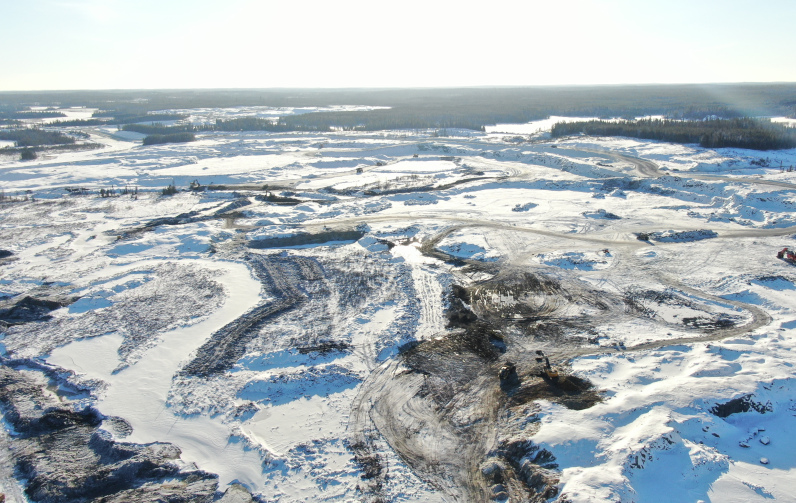A non-binding court decision from the Court of Appeal of Alberta casts doubt on the future of environmental assessment in Canada. Photo by Tingey Injury Law Firm on Unsplash
On May 10, the Court of Appeal of Alberta (CAA) stated in a non-binding majority opinion that the Impact Assessment Act (IAA), previously a component of the controversial Bill C-69, is unconstitutional. What this implies exactly moving forward may be nebulous to anyone who has not closely followed the issue. Here is what has been going on:
What does the Impact Assessment Act do, exactly?
Enacted in 2019, the IAA lays out the process and timeline for assessing the environmental, economic, social and health impacts of major projects under federal jurisdiction. It was also designed to facilitate cooperation between the federal, provincial and Indigenous levels of government on projects that fall under their respective powers. Part of an electoral promise from the Liberal cabinet, the Act was created to speed up and clarify the assessment process as defined under the Canadian Environmental Assessment Act (CEA) of 2012.
Why is it controversial?
Introduced as Bill C-69, the impact assessment process became a political lightning rod in 2018 when the governments of energy-rich provinces, namely Alberta and Saskatchewan, started to claim that the new legislation would scare away investors and rob provinces of their right to profit from their own resources.
These arguments are echoed in the CAA’s opinion, which states that “Parliament has taken a wrecking ball to the constitutional right of the citizens of Alberta and Saskatchewan and other provinces to have their… natural resources developed for their benefit. And in doing so, it has also taken a wrecking ball to something else — the likelihood of capital investment in projects vital to the economy of individual provinces.”
Is that what makes it unconstitutional?
While it is one of the CAA’s arguments, its legitimacy is debated among legal experts (and by the justice who presented a dissenting opinion). “With the utmost respect to the Alberta Court of Appeal… it appears to be a totally novel argument that the court is advancing and one that is unsupported by, and in fact contradictory to, the jurisprudence from the Supreme Court of Canada,” said environmental lawyer Anna Johnston, who represented Nature Canada as an intervener in the case.
Moreover, the IAA grants the federal government rights to intercede in matters that fall under provincial competences. According to the Court of Appeal, this undermines the separation of powers outlined in the constitution, and also contributes to the IAA’s unconstitutionality.
Has something like this happened before?
In 2020, the Court of Appeal of Alberta found another federal measure to be unconstitutional: the carbon tax, which regulates greenhouse gas emissions. The Court had then called the Greenhouse Gas Pollution Pricing Act a “constitutional Trojan horse,” while also citing socio-economic concerns. In the end, the Supreme Court of Canada overturned the opinion, not agreeing with Alberta that the right to natural resource development shielded provinces from federal environmental and climate laws.
Related: Skeena Resources’ Eskay Creek project will require Tahltan consent to move forward
So, what happens now?
The CAA’s opinion is not binding, which means nothing changes legislatively for the moment. The federal government has confirmed its plan to appeal, meaning that it will now be up to the Supreme Court of Canada to settle the matter once and for all. “The likely scenario is that we’ll carry on business as usual with the Impact Assessment Act still standing until we get a Supreme Court decision, which could be two or three years away,” said Johnston.
If the Supreme Court ends up confirming that the IAA is unconstitutional, it is unclear as of now what will happen exactly to impact assessment law, as that may be informed by the Supreme Court’s instructions. “I’m pretty sure that there’s not much interest to go back to the CEA 2012 regime. It had a lot of inherent problems, a lot of stakeholders and members of the public and Indigenous communities had issues with that regime,” said Richard Lindgren, who was co-counsel for the Canadian Environmental Law Association, Environmental Defence and Mining Watch Canada in the case.
How have the key players reacted?
Alberta Premier Jason Kenney called the opinion a “huge win for the people of Alberta,” and noted in a press conference that he expected the majority of provinces to support Alberta once the case reaches the Supreme Court. Meanwhile, Federal Natural Resources Minister Jonathan Wilkinson stated in Parliament that the government is quite confident about its position being upheld by the Supreme Court.
The Canadian Association of Petroleum Producers (CAPP) welcomed the CAA’s stance, agreeing with it. “The provinces are best positioned to review and regulate resource development projects within their own borders and guard against regulatory uncertainty and maintain competitiveness,” said president and CEO Lisa Baiton.
As for the intervenors in support of the IAA, Lindgren expects that his clients will want to intervene in front of the Supreme Court as well. “Our position is and continues to be that there’s a strong constitutional basis for the Impact Assessment Act, and one hopes that the majority of the Supreme Court of Canada would agree with that proposition,” said Lindgren.
In summary, then?
Alberta and its supporters say that the IAA breaches constitutional principles, claiming a right for provinces to exploit their own natural resources as they see fit. Proponents of the IAA, in contrast, argue that there is plenty of legal precedent for the federal government to have environmental oversight on major projects. While the CAA may have found the IAA to be unconstitutional, its opinion is not legally binding, so nothing concrete will come of it until the Supreme Court reviews Canada’s appeal, which could take a few years.




